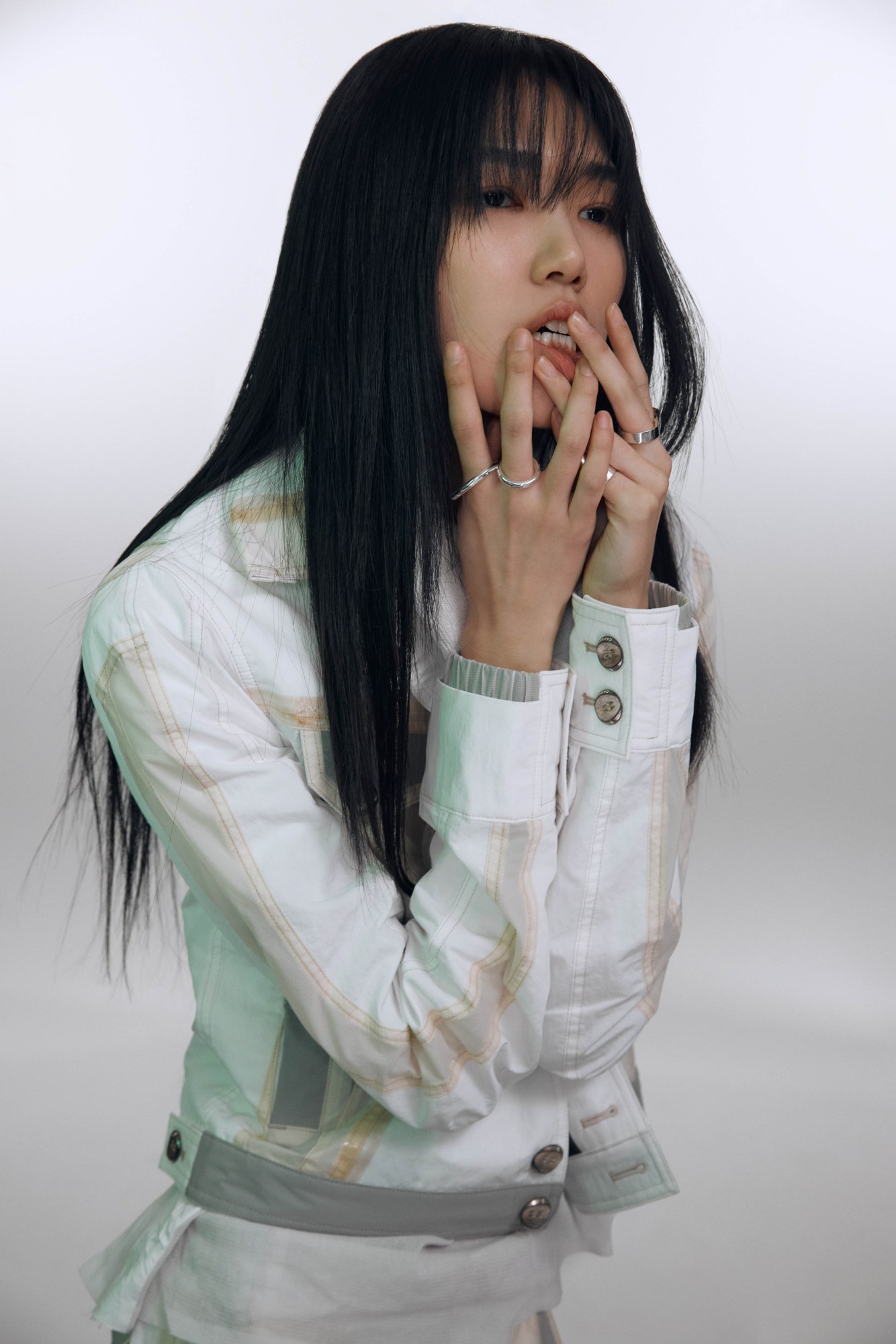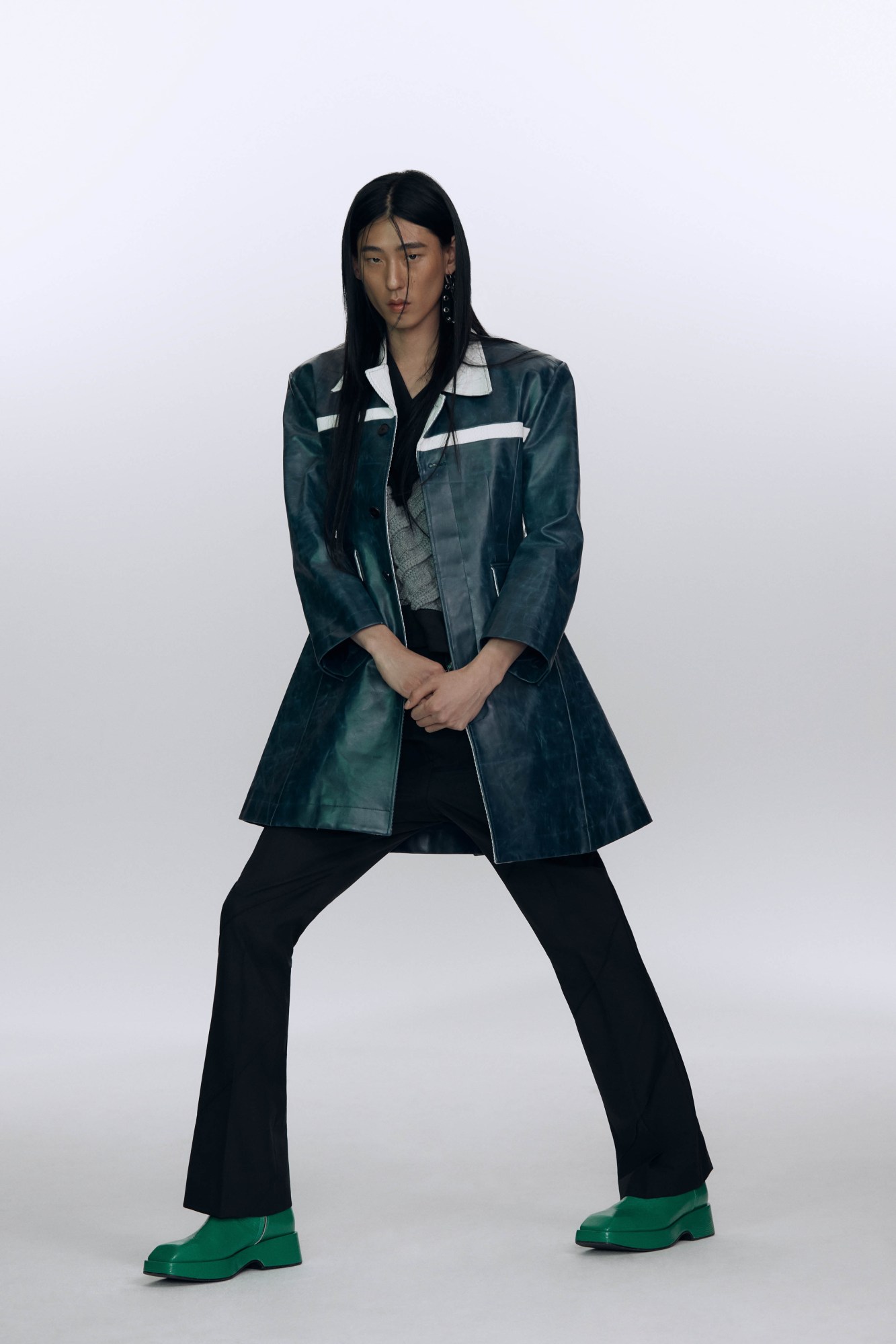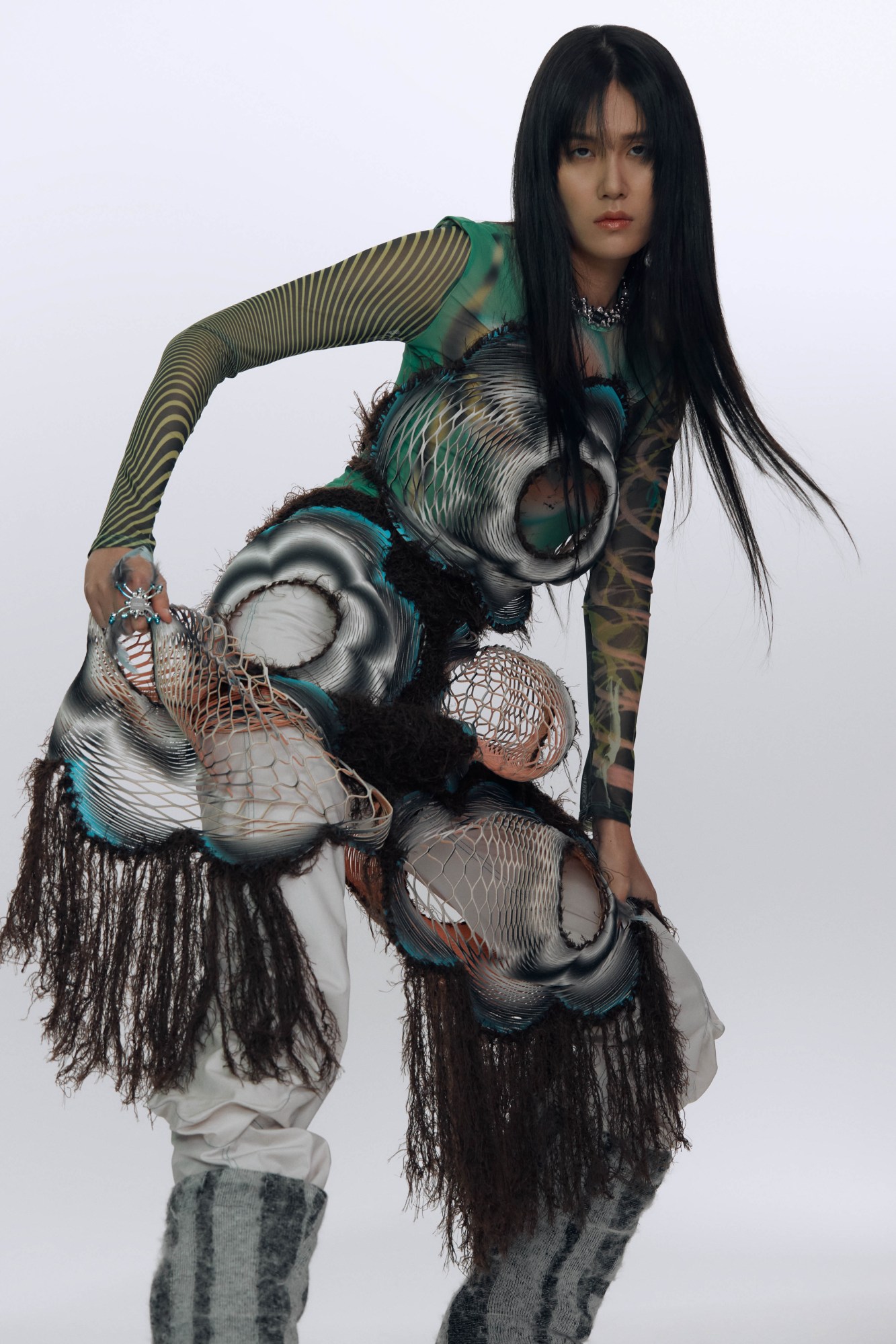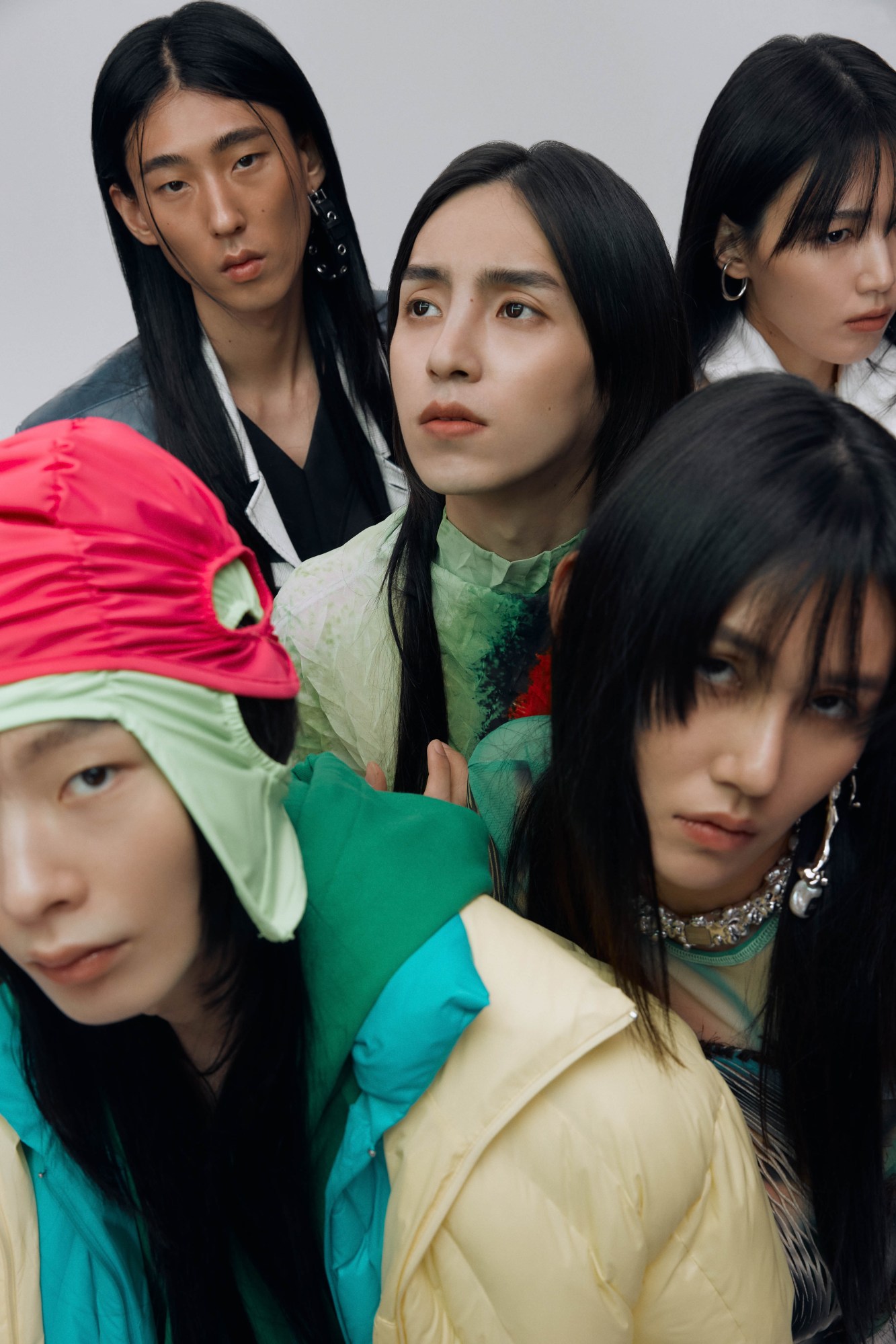For some people, fashion simply refers to the trends that come and go. For others, it’s the clothes they happen to put on each day. But for a rare group, fashion is an essential part of self-expression and a lifelong work. It’s something that rings especially true for designers; those turning the things they experience and imagine into the creations we covet.
Today, we’re looking to the designers at the forefront of a new generation of fashion in Korea. All five labels offer something unique; something whose impact is already being felt in the schools their founders graduated from, the followings they’ve built up and of course, the industry they’re making waves in. Designing everything from experimental knitwear to protective shells and even clothes as a form of therapy, these five emerging brands are shaping the future of Korean fashion.

Carnet Archive
Halyn Kim and Young Dae Kong met at London College of Fashion, bonded over an appreciation for technical design and started making clothes together as CARNET ARCHIVE. The name (meaning a collection of notebooks) alludes to the brand being something of an experimentation; a work in progress; and since they started working together in 2017, they’ve racked up a mighty amount of research.
But CARNET ARCHIVE is more than just a technological playground. Seoul-born Young Dae Kong draws particular influence from art and literature that explores a darker side of human existence – works by the likes of Elliott Smith and Harmony Korine, as well as French philosopher Albert Camus and Japanese author Osamu Dazai. Halyn Kim, on the other hand, pulls inspiration from all angles, describing being driven instead by “a broad, pure interest in things of value”. Their brand identity – which centres conceptual depth as well as quality and purpose – had clearly begun to form long before the designers had even met.
After presenting their well-received SS19 collection, A Sculpted Sculptor, the brand continued to grow in popularity with the release of AW21’s Paper Crustacean and its bold experiments with silhouette and ergonomics. “In the process of combining elements of streetwear and grunge, we carefully considered the subtle balance of experimentation and perfection,” the designers explain.
CARNET ARCHIVE are currently preparing their AW22 offering – a combination of both men’s and womenswear – as a continuation of their Paper Crustacean collection. A study on the structure of clothes and the human body, it presents clothes as a shell. “It’s one of the long-running themes of CARNET ARCHIVE,” they tell us, “clothes as a social skin that protects you from the outside: exaggerated body shapes, references to crustaceans and architectural structures.”
The designers oppose fast fashion, instead supporting long-term satisfaction and slow values – something they plan to continue exploring as their brand develops. Sharing their process, aesthetic development and sense of purpose in a digital archive is as important to CARNET ARCHIVE as the resulting clothes; something that shows in their considered, forward-thinking approach to navigating the industry: “Instead of a runway collection, we have been experimenting freely with the idea of installation, video work and 3D graphics.”

ANCHOVI
From the online fashion community he discovered in middle school to the Marc Jacobs documentary he obsessed over in his teens, fashion has always been Kwun Hyuk Kim’s thing. The Seoul-based creative went on to study and work in fashion, but on finding the reality was a world away from what he had envisioned, he decided to create his own brand: ANCHOVI. The menswear label, gaining traction with its witty details and fresh campaigns, is about to launch its fifth collection.
Kwun Hyuk Kim describes making clothes while running a brand as “a balancing act”, and the same goes for treading the line between commercial viability and design. “As we change the theme each season, we express a number of ideas from our research but always keep things accessible,” he explains. It’s classic, everyday menswear, but there’s something a little different about it: elements are deconstructed, unusual materials are used.
While ANCHOVI doesn’t make clothes explicitly for the runway, as a fashion fan first and foremost, Kwun Hyuk Kim has long been in awe of the traditional fashion week format. “I’m currently doing offline and online presentations, in order to develop the brand,” he says, noting that his ultimate goal is to take ANCHOVI to Paris Fashion Week. Currently preparing to show ANCHOVI AW22, a collection that was largely inspired by Miguel de Cervantes’ Don Quixote, Kwun Hyuk Kim is busy. And although that international ambition drives him, a major inspiration behind the brand lies a lot closer to home. “Korean culture currently has a huge influence globally,” he says. “And as a designer brand based in Seoul, we are aiming to have a global impact by sensitively incorporating our culture and trends into our work.”

UPNOON
Jisoo Jang and Dahee Kim – friends since high school in Korea – met their Myanmar-born classmate Moe Inzali while studying fashion design at Central Saint Martins. Now based back in Seoul, together the trio weave knitwear, print and innovative silhouettes into their brand, UPNOON. “We wanted to create a brand that is visually fun for people,” they tell us. “We are experimenting with the idea that it should be fun not only for the wearer, but also for those of us who make it.”
Jisoo grew up not far from Seoul in Ilsan, Gyeonggi-do, and loved installation art, East Asian painting traditions and ceramics from an early age. Dahee, meanwhile, became interested in fashion through drawing and shooting videos. Moe, whose mother is also a designer, studied beauty and hair design in Japan for five years before moving to London. As such, the trio bring a wide range of tastes, experiences and skills to UPNOON, a brand they consider an “extension of a project with like-minded friends”. But it is so much more than that.
Their SS22 collection took the global pandemic life had thrown at them and flipped it on its head: what if alone time was something to be celebrated? What if the designers had in fact been blessed with a distraction-less period in which to dream up their ultimate fashion fantasy? “We wanted to present a collection of interesting textiles that capture the characteristics of both knitwear and print,” Moe says, noting that the process of finding the right factory and making prototypes was not easy. The resulting collection – sleeveless dresses, eclectic knitwear and spiral patterned prints – conveys the story of an inventor free to let their imagination run wild.
The friends explain that their primary goal as a brand is “to create a strong fan base and become someone’s inspiration.” It’s something they aim to do, not just with each new collection, but also in their efforts to become as sustainable as possible. Of course, money and technical difficulties come into play here, but UPNOON aren’t looking for fast fixes, rather a long term experiment tackled one step at a time. The checked dress they presented in their SS22 collection, for example, was designed to emphasise the texture while minimising fabric waste. “The pattern is almost rectangular,” they explain, “and the cut is made to be as eco-friendly as possible.”
While working on their new collection, Dahee says that the three of them talked for a long time, sharing personal experiences and secret muses. “There are times when we think: I want that person to wear it,” Dahee explains. And whether that’s a historical figure from an old painting, a friend or somebody they see out and about, “a little muse keeps appearing during the design process”. By incorporating experimental elements and keeping that muse in mind, UPNOON crafts whole worlds around them.
As the trio move into 2022, a series of developments has shifted the way in which they work. The purchase of an automatic knitting machine has enabled a more versatile approach to their designs; and they’re also launching UPNOON Lab, “a collection that contains various experimental textures and expressions not usually seen in knitwear.” They note that in the future, they want to give back by creating a collective or platform: an environment where creative people are freely able to collaborate. The overall aim? That people from across the world come together to experiment and ultimately tell a story — much like UPNOON have done themselves.

GOOMHEO
Long before creating her namesake menswear brand, Goom Heo’s teenage dream was to become an interpreter. “Then, by chance, I saw a documentary about fashion schools around the world and, as if possessed by something, I started preparing a portfolio,” she explains. Fast forward through several years at CSM and she was hooked. “I found the process of creating my own collection so exciting,” she says, “that by the time it was completed, I had applied for a master’s program and decided that I wanted to have my own brand.”
Since then, she’s launched four collections as GOOMHEO with the support of Fashion East. The brand’s core values centre on a surreal, bold, new vision of masculinity that fuses experimentation and chaos and makes it sing. Elements such as pleated materials, digital graphics and careful draping that interprets the curves of the human body seem dissonant at first glance, but soon become harmonious. It’s menswear, sure, but femme touches like exaggerated frills appear throughout and support Goom Heo’s mission to make clothes for people to express themselves with.
As a designer leading a young brand, she has learned a lot from her four seasons with Fashion East. “It wasn’t just about making clothes,” she explains. “The process of collaborating with a stylist, preparing for a shoot, and coordinating collaborations were areas that I hadn’t been taught in at school.” Goom Heo had a number of people who helped her; together reviewing each season and preparing for the next one, which in itself was a huge motivator. “I would be lying if I said it wasn’t hard because I have to be involved in everything – from design development to collection production, publicity, filming, and management,” she says. “There are times when I get stressed out, but when that happens I just try to picture myself in 10 years.”
As she develops GOOMHEO further, the designer says her goal is to help develop a diverse and talented Korean fashion scene. Also on her list of long term manifestations? Becoming the artistic director of a major fashion house, something which she notes no Korean has achieved at this point — and when she says it, it sounds very much within reach.

SUNG JU
For Seoul’s Sung Ju Lee, designing clothes is a deeply personal thing. Using creation as a form of therapy, he draws on painful experiences, embracing and processing them through his work. The very first SUNG JU collection, Relation (released in early 2020), sprung from a compilation of memories and associated objects — a theme which has continued to evolve with his career. The image of a yellow Korean melon, for example – an unwanted childhood nickname that sounds similar to his own – appears in one collection in bag form.
Aesthetically, SUNG JU is inspired by everything from streetwear and sculpture, to architecture and traditional Korean dance; a blend of old and new culture that permeates his city and shows up in his rich colours, ruched fabrics and bold silhouettes. His second collection, Conflict, represents the clash of personal impulses and inhibitions, and contains a powerful reinterpretation of the 1930s and 40s zoot suit. The collision of form and colours – the aforementioned suits, modified bomber jackets, T-shirts with three-dimensional shapes and pleats – sit in stark contrast with one another but ultimately develop a kind of harmony.
“Starting a fashion brand may not be difficult for some,” Sung Ju Lee tells us, “but I think it is difficult to continue developing it. There are parts that I miss, and parts that I neglect, but I am working to fill in the missing parts.” His goal with SUNG JU is clear: to share his story while bringing something new and exciting to the lives of those who wear the clothes. Due to present his second ever physical show at NYFW this February, the designer looks to be well on his way to achieving that goal.
Credits
Creative Direction Songin
Photography Hwang Byung-moon
Styling Yoon Ji-hyun
Make-up Han Ju-young
Hair Park Giihee
Models Choi Hyun-joon, EZ, Na Jaeyoung, Jung Hyunjae, Lee Minji at Gost Agency
